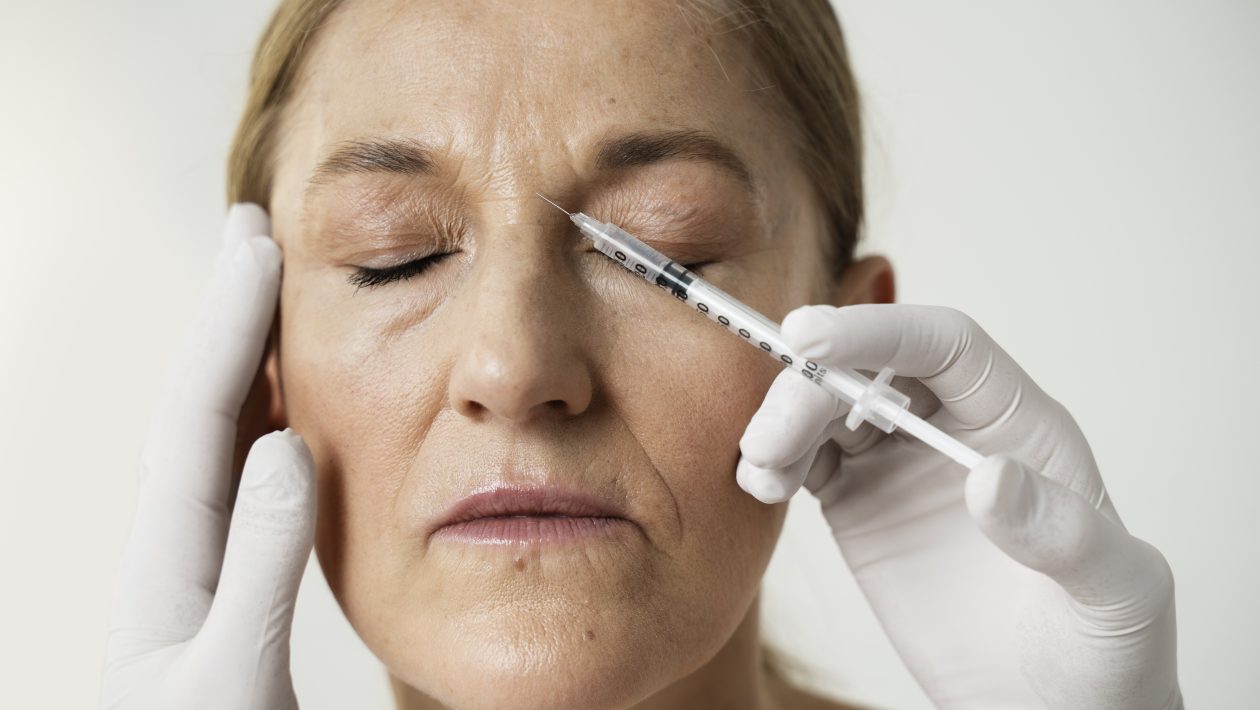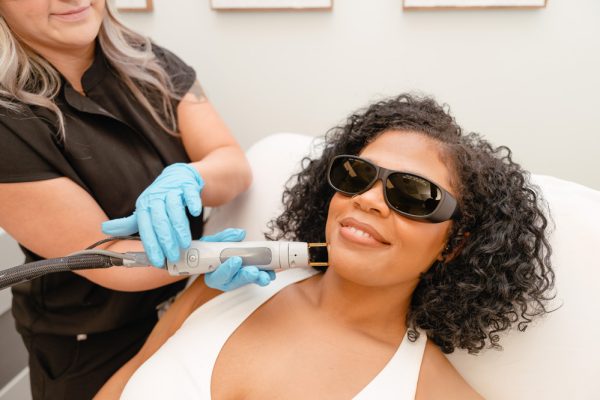Introduction
In this advanced age, there are many ways to look young. But two in particular have grown in popularity: Botox and dermal fillers. Both treatments come with their own benefits and procedures when it comes to reducing wrinkles on the forehead. In this article, we’ll be going over everything you need to know.
1. What Makes the Forehead Wrinkles?
Before you can understand how effective Botox fillers are at treating forehead wrinkles, you need to understand what causes these lines in the first place. They usually come from a mix of things like repetitive facial movements, loss of collagen and elastin, and just getting older.
2. Botox for Forehead Wrinkles
2.1 How Does Botox Work?
Botox is actually short for the long scientific name botulinum toxin, and it’s a neurotoxic protein that comes from Clostridium botulinum. It’s used to paralyze certain muscles in the body for a short while and reduce the appearance of wrinkles on the skin, mostly on the forehead. It sounds like it hurts, but surprisingly enough, it doesn’t at all.
2.2 Botox Procedure Details
A professional will perform this treatment in a series of tiny injections. Botox is used to target the muscles in your forehead and remove any wrinkles there. It’s a quick process and typically isn’t invasive, not even needing an anesthetic.
2.3 How Long Does Botox Last
The results of a Botox treatment are not permanent. They typically last between three and four months. Eventually, the muscles regain their ability to contract as normal, and the injections lose their effectiveness. Consistent treatments help extend this window and keep your skin looking like it’s on pause from aging.
2.4 Side effects of Botox
Botox is generally safe, but there are some potential side effects. It’s not uncommon to experience a little bruising and swelling at the injection site. There’s also a chance your eyelids or eyebrows will droop, but this is extremely rare. To minimize any risks, it’s crucial that you go to someone who knows what they’re doing.
Botox: Pros and Cons
Pros:
Muscle Relaxation:
Botox is a treatment where people get to look younger. It does that by getting rid of wrinkles caused by moving muscles. Since the eyes and forehead hold most of the face’s wrinkles, that’s where Botox targets.
Stopping Wrinkles:
Botox treatments are fantastic for preventing and stopping the progress of current wrinkles. They also excel at keeping new ones from appearing.
Medical Uses:
Botox isn’t just a beauty substance; it also has various medical uses. If you thought going under the knife was the only way to get rid of migraines, excessive sweating, or muscle spasms, think again. But don’t worry; these can be cured by Botox as well.
Cons:
Botox is Temporary:
You must continue to get treated every few months if you want to keep your desired look. These injections make your muscles stiff, but they don’t last long.
Pain That Leaves Quick:
It’s normal to feel a minor pain or see some bruising when you get a shot. But you don’t have to worry; it’ll pass by in no time.
3. Dermal Fillers for Forehead Wrinkles
3.1 How do dermal fillers work?
Do you know how Botox works? Unlike that, dermal fillers aren’t here to paralyze your face. The creator of wrinkles has met its match when it comes to fillers. When they inject hyaluronic acid into your skin, it’s not just there to make it thicker but also to smooth out all the lines and wrinkles.
3.2 Dermal Fillers Procedure Details
Dermal fillers are the best way to debug your forehead. It’s done by injecting filler into the areas where you want it the most. The procedure is quick, and you can choose to do it with or without numbing cream; it is completely up to you.
3.3 The Elasticity of Dermal Fillers
Many different factors come into play when determining how long dermal fillers last; however, the most crucial ones are the type being used and individual factors. Forehead wrinkles can generally stay filled for about six months to a year. One thing is for certain: they will eventually disappear. This forces people to go to regular appointments to get more fillers so their faces stay the way they want them.
3.4 Possibilities of Side Effects from Dermal Fillers
After getting dermal fillers, people may experience some common side effects. These include temporary redness, swelling, or bruising at injection sites. But that’s not all—some people might even experience an allergic reaction or infection. Experts say this is rare, though, so it’s not something to worry about too much. Before getting the treatment, it’s important for people to discuss any potential risks with a qualified professional.
Dermal Fillers: Pros and Cons
Pros:
Volume Restoration:
As you age, your skin starts to form deep lines and creases. The solution? Dermal fillers can be used to add volume in those areas.
Collagen Stimulation:
We all know that miracles come in many forms, but I wouldn’t expect that miracles could be on a needle. The needle is what’s used for dermal fillers, though; all it does is stimulate your own body’s collagen production. This means your skin will improve over time, gradually improving its texture and elasticity.
Customizable Results:
There are all types of dermal fillers. So when it comes to treatment, it is a no-brainer that they can be custom-made just for you. By letting the doctor know how deep your wrinkles are and where they are on your face, they will make sure you’re treated right.
Cons:
Risk of Overfilling:
When someone inexperienced does the job, they’re more likely to go above and beyond. One thing you don’t want is too much filler. This could result in something that looks unnatural. Make sure to find someone who knows what they’re doing and can give you the natural look you want.
Temporary Swelling:
Giving patients shots in a specific area can cause swelling and redness. It takes a few days to go away, but it does affect them right after treatment.
Key Differences Between Botox and Dermal Fillers:
How It Works:
Botox freezes the muscles that cause deep lines, while dermal fillers add volume to creases and folds using jelly-like things.
Duration of Results:
For Botox, you can expect it to last around three to six months. However, dermal fillers give quite a bit more mileage. With results that range from a few months to two years.
Immediate Results:
Waiting for Botox to work is no fun. It can take a few days for you to see any effects you want, and nobody wants that. Instead of Botox, though, you can get dermal fillers for quick effects. You don’t have to wait. Just one poke, and you’ll be on your way.
Versatility:
Dermal fillers have a wide range of uses. Due to this, they are great for when someone wants to give their face a makeover. There are countless things they can do, like enhance their lips and shape their cheeks.
Conclusion
When it comes to addressing forehead wrinkles, there are effective solutions available in the form of Botox and dermal fillers. Botox targets the underlying muscles, whereas dermal fillers add volume to the skin, offering distinct approaches to wrinkle reduction. The choice between these treatments depends on your desired outcome and personal preferences. To make an informed decision, it is crucial to consult with a knowledgeable professional who understands your needs.
At Your Studio Wellness, we offer expert guidance and personalized consultations to help you choose the best treatment for your specific concerns. Our experienced professionals can provide detailed information about the unique benefits, procedure specifics, potential side effects, and long-term effects of both Botox and dermal fillers. Contact us today to schedule a consultation and embark on your journey to smoother, youthful-looking skin.





